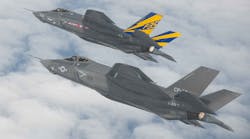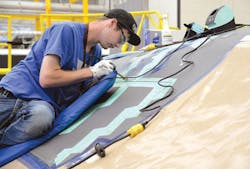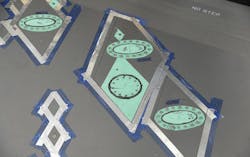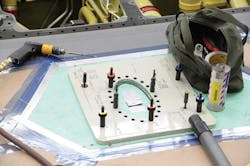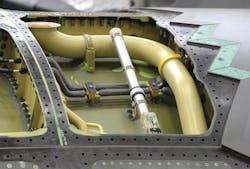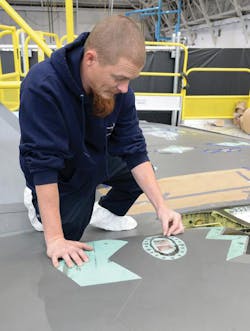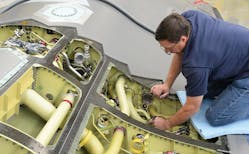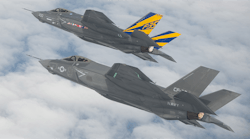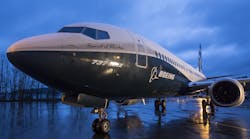It's been just three months since the U.S. Air Force declared the long-awaited F-35A ready for combat. But already the joint government-Lockheed Martin operation that manages the world's largest fighter program has overcome a major hurdle, returning most of the operational fleet to the skies just weeks after grounding 15 aircraft due to debris discovered inside the wing fuel tanks.
The rapid turnaround of a complex maintenance challenge reflects the Joint Strike Fighter's (JSF) successful transition from brand-new development program to mature -- if not yet fully-fledged -- operational fleet. Where previously a minor modification could throw operators off schedule for months, the airmen and contractors tasked with maintaining the fleet identified and fixed the latest problem within a few weeks.
Although the Joint Program Office initially estimated the aircraft would return to service by the end of the year, almost all the F-35s of the "Rude Rams" 34th Fighter Sqdn. here at Hill AFB, Utah, are now back in the sky -- more than a month ahead of schedule. All 10 aircraft have now received the insulation fix, and eight were expected to be flying by Nov. 11. Airmen are still conducting operational checks on one of the remaining jets, while the other is in depot maintenance for a previously planned modification.
A Maintenance Success Story
"The recovery time has been pretty incredible," says Lt. Col. George Watkins, the squadron's commander. "When I first heard of the issue, I really thought it would be 6-12 months before we'd get some of the jets fixed. But it's looking like they are all going be back to us by the end of Thanksgiving [Nov. 24] -- or even before."Early assessments indicated the impacted fighters -- including 10 of 15 aircraft in the Air Force's first operational F-35 squadron, as well as 42 in-production models -- would be down for three months due to crumbling insulation that technicians feared could clog the fuel tanks running through the wings, according to Tech. Sgt. Jesus Soto, an electronic warfare specialist in the 388th Fighter Wing's Component Maintenance Sqdn. But Lockheed and the government have defied the odds, rapidly moving to identify the root cause of the problem -- a supplier mistake, not a technical development issue -- design a fix for the affected aircraft, and implement a solution.This article first appeared on Aviation Week, an NED partner.










